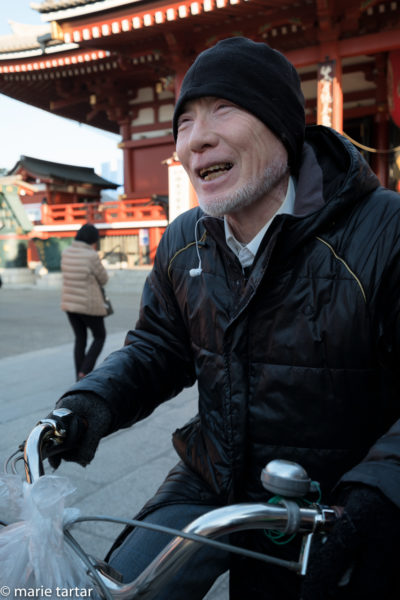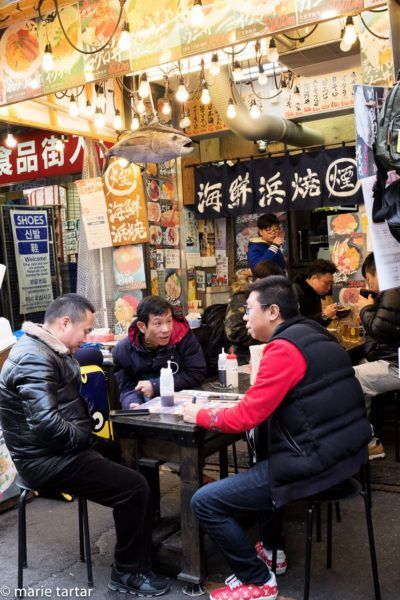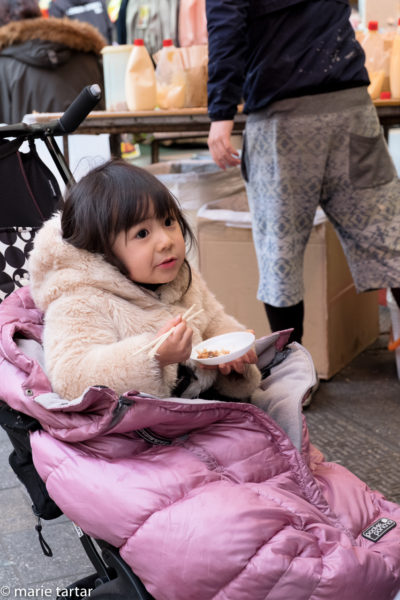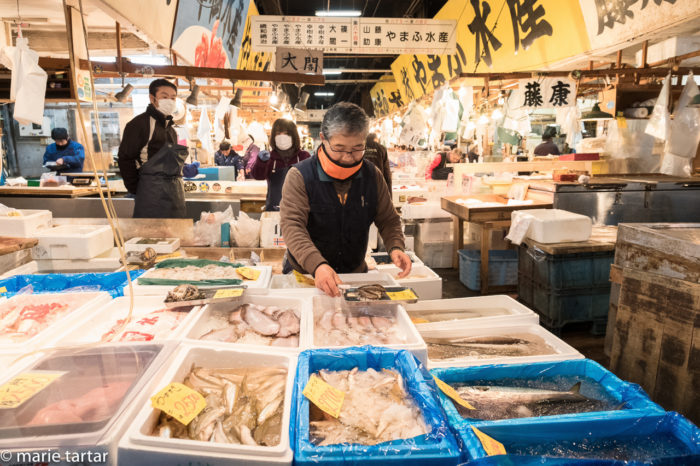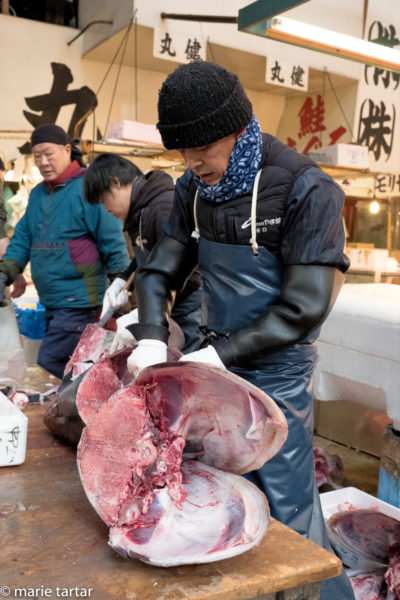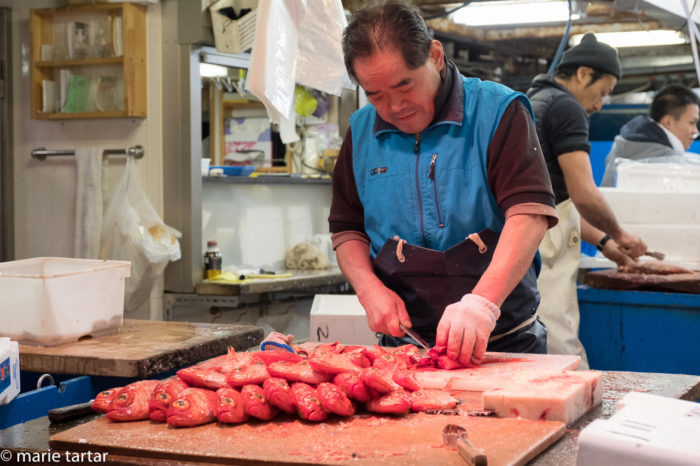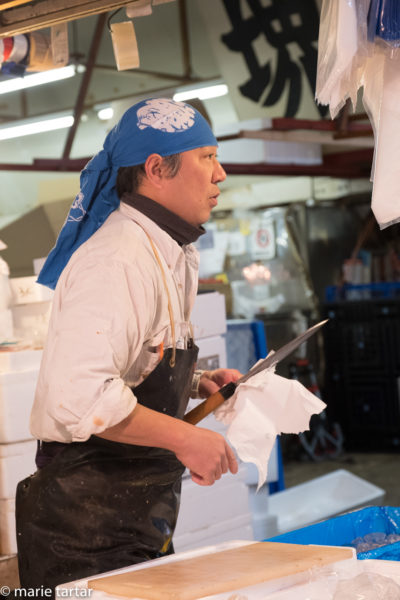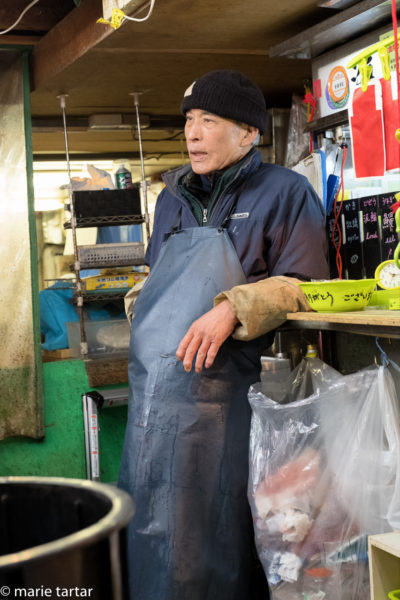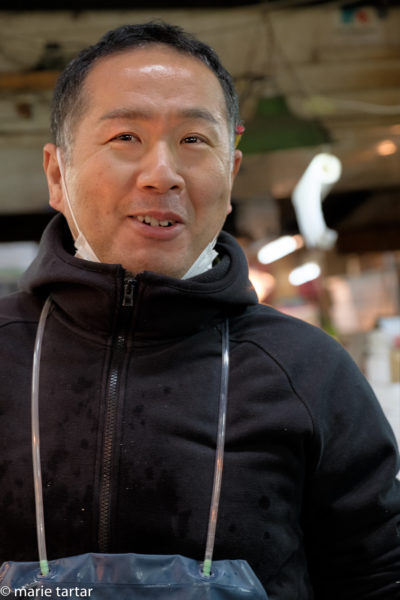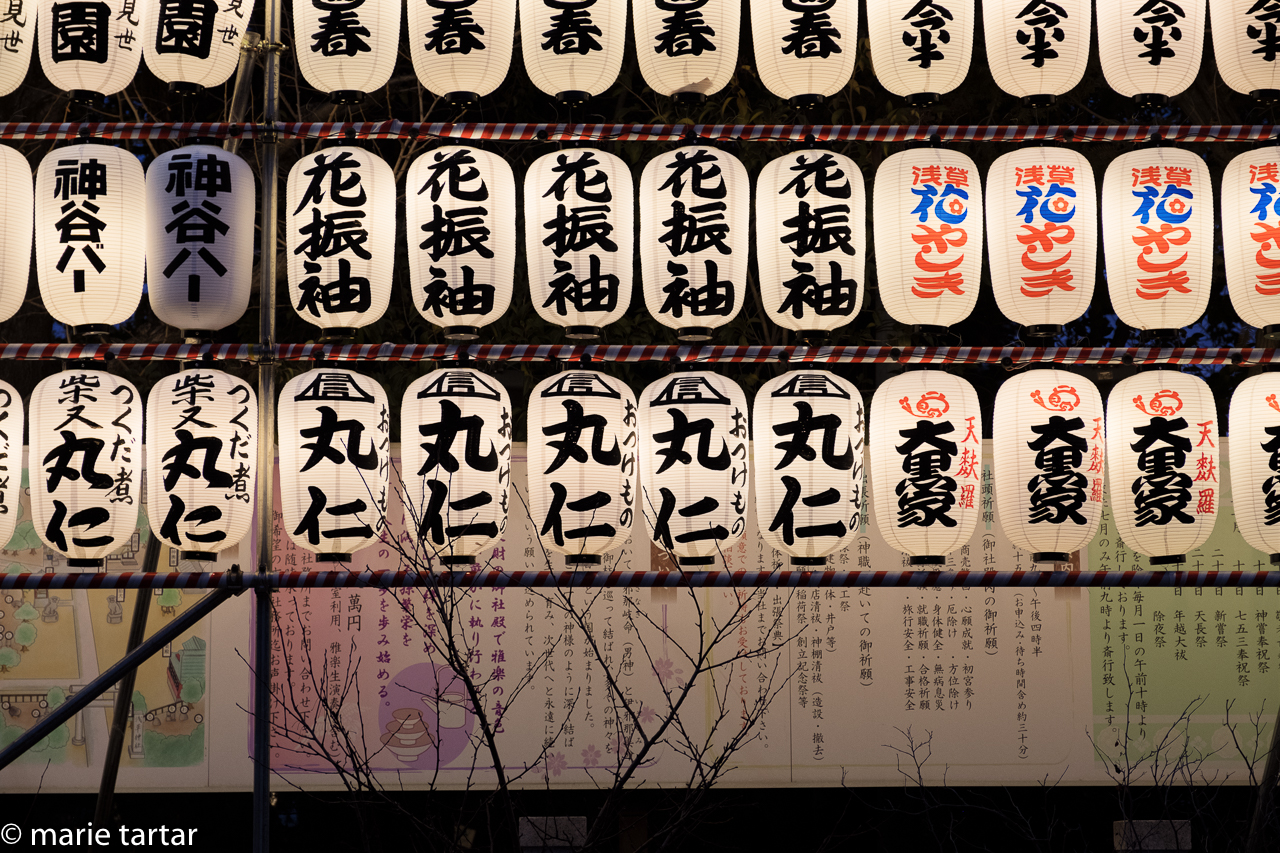
Tuesday, January 30, 2017 (evening)
Back at the hotel, exiting our room and waiting for the elevator, there was a slender, slightly boyish woman waiting already, who looked familiar. Guessing correctly, I said: “Are you Susan (Myers, our guide), by chance?” She assented, but made no effort to engage us in conversation or to learn anything about 2 of her 6 clients for the next 10 days on the elevator ride down.
Although I didn’t think much of this slight interaction at the time, in retrospect, it set the tone for what was to come, a curiously indifferent Dr. Jekyll/Mr. Hyde mix of occasional friendly conversation (mostly if you carried the conversational ball and asked about her, but not really reciprocal) oscillating with impatience and a frank lack of empathy rarely encountered in a professional nature guide.
The other participants were Bill, a friend of Jack’s, also from the Pacific Northwest and a veteran of Jack’s workshops, Karen, a less experienced photographer from Austin, and her father Peter, who lives in Florida.
Dinner was in a home-style Japanese joint a few doors down. I found plenty to like, but Steve was less enthusiastic. There were oysters to start with, crab, sushi, noodles and turnips with fish. One offering was puzzling, raw, white, glistening, with shelf-like layers. We had never encountered it before. Greg said it was fish gametes and he was close to right. He had questioned this offering on a menu in a sushi restaurant in Chicago, as in “Fish gametes?!” To which the unfiltered waitress responded: “I know, but they don’t taste spermy at all…!” It turned out to be shirako (means white children in Japanese), the sperm sacs (milt) of male cod (less commonly, salmon, anglerfish, squid or pufferfish), available seasonally in winter. Suffice to say, this is an acquired taste, even for the Japanese. It is also served cooked, maybe next time…
As the laden trays arrived to the table, Susan’s comment “Don’t get used to this” was foreshadowing. Suffice to say for now that while she did a good job with logistics and driving, getting us where we needed to be at the right time of day, the culinary aspect of this trip was not a highlight, a shame in a country with so many delicious specialities.
Wednesday, January 31, 2018
We were up at 4:45 am to be ready for our lobby meet-up at 5:45 am. We hopped onto the Ginza line to Asakusa.
Very few people were stirring at normally busy Sensō-ji Temple. Most seemed to be walking their dogs and socializing.
Su (or maybe Tsu?), a gregarious English-speaking spry senior resident of the neighborhood, happened by on his bicycle.
He had worked with US Navy and studied abroad and spoke English well. He told us about his son being sent to a dead town of 500 in Texas as an exchange student. Eventually, when he was able to transfer to Chicago, his reaction was ecstatic: “Now, that’s a town!”
Our next stop was a case of mistaken temples. Our destination was a Shinto shrine with miniature Inari (a line of orange torii gates lining a hill climbing walkway, marking the entrance to a Shinto shrine and a transition from this world into the spiritual), Sanno-Hie-Jinja in Akasaka. Apparently, there are 2 temples with identical names. Arriving at the first, before the mix-up became apparent, my first thought was “I must be templed out!”, it was so undistinguished. Our destination Akasaka shrine Sanno-Hie-Jinja has a large and famous matsuri festival every even number year on June 15.
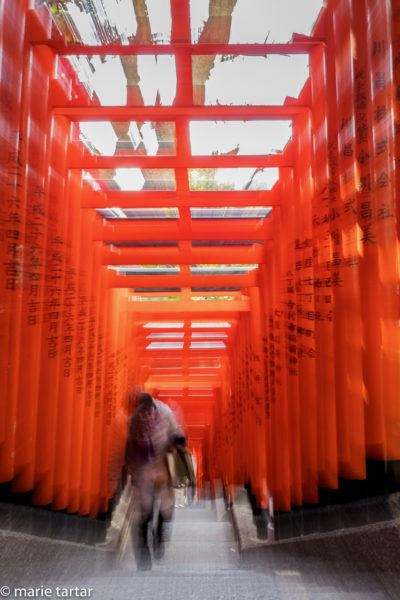
Bill’s experiments with zooming the lens during the exposure prompted Greg and me to experiment at Sanno-Hie-Jinja in Akasaka.
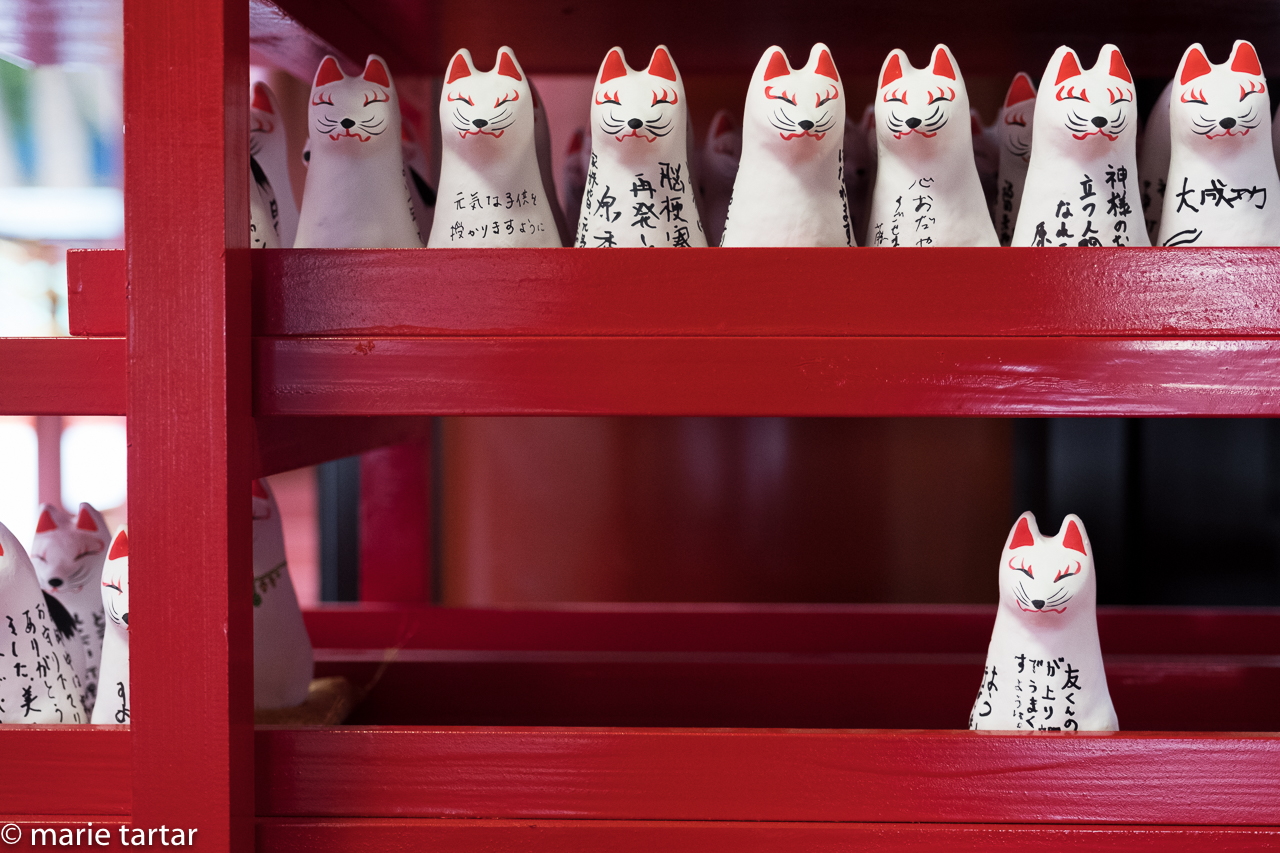
Fox figurines at Shinto shrine Sanno-Hie-Jinja in Akasaka; an alternative to the wooden ema boards and a repository for your dreams and wishes.
Arriving at our intended destination, Susan muttered something about meeting up later at the tearoom. Having passed the Capitol Tokyu Hotel with a lovely lobby and tearoom, I headed there at the appointed time, only to find no one else there. I hiked back up the hill to the temple to find another tearoom I hadn’t previously seen, where everyone was waiting. Bill was finishing a very satisfying looking nabe hot pot, but there was no time for me to order, so off we went to the next stop.
This found us at mid-day at the Shibuya scramble. Mid-day is generally not the best time to shoot outdoors unless it happens to be overcast, and it didn’t compare with being there the night before with the glowing neon and billboards. Karen and her father Peter had also arrived before the start of the trip and had done a day workshop shooting there. She gave me the rundown on the leader’s advise on where best to capture the streams of humanity (6 strips into the intersection, making sure the strips traversed across the field of view), so I practiced this strategy before Steve, Greg and I grabbed a quick tempura lunch on the restaurant floor of a nearby depaato.
The final site of the day was a shopping street off Ueno Station. Ueno, of course, is a name that resonates with me, being an Ueno (Mama’s family name). The name means “upper field”. The “ue” part I recognize, meaning on, like on a table. Ueno is an area in Tokyo containing Ueno Park, which functions like the Central Park of Tokyo, being home to the many museums, including Tokyo National Museum.
This shopping street was new to us, a fun wander and street shoot, with abundant takoyaki (octopus balls) joints, vendors, and lots of foot traffic. I learned afterward Ameyoko started as a black market after WW II. There now are 400 stores under the tracks, following the Yamanote line, extending from Ueno station to Okachimachi.
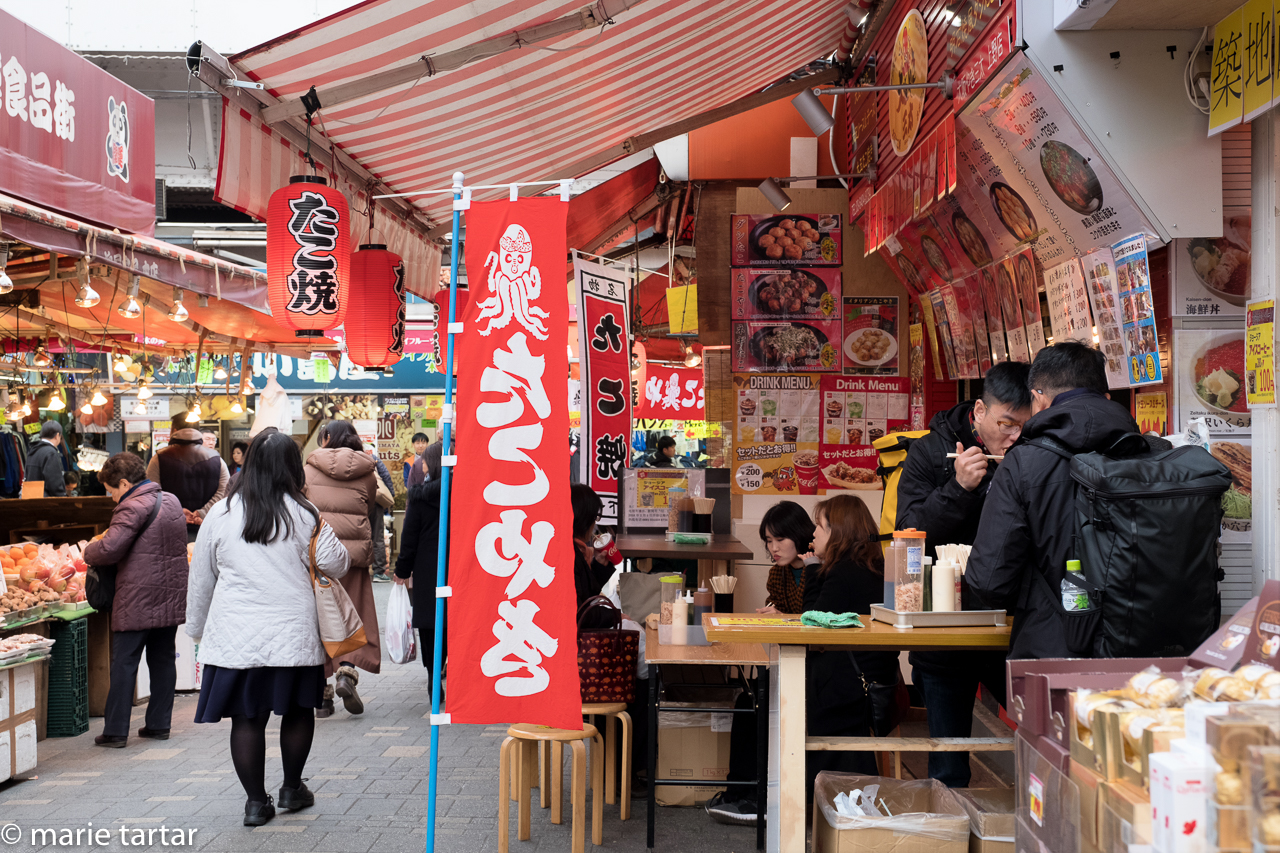
The big red sign says tako-yaki (cooked octopus or octopus balls); of course, that scary octopus figure on the banner is another clue! The diners appear to be enjoying them. Ameyoko shopping street, near Ueno station, Tokyo
Dinner was near the hotel again, Kyōbashi Terrace, “tapas” (in the small plates sense) and pasta.
Thursday, February 1, 2018
We walked in the dark north toward Tsukiji. A collective eyebrow was raised as we were directed into a Tully’s for breakfast. Had we known we were about to embark on a food tour of Tsukiji and wouldn’t just be visiting to shoot, we might not have felt the need to avail ourselves of quiche, apple turnover, and café latte. Communication was not to prove to be Susan’s strong point, as we were just learning.
Pulling up in front of a cute storefront, Turret Cafe, we met Asami and Asha from Arigato Japan Food Tours. A turret is unique to Tsukiji, a specialized miniature truck-like vehicle. The latté was excellent. I think Asami was puzzled when everyone didn’t avail themselves of the delicious lattés, but she probably didn’t realize we had only come from Tully’s 15 minutes before!
These 2 young and charming women were our escorts through Tsukiji. Asami spoke English well, having worked in a Las Vegas restaurant for 10 years. Asha was from Toronto and had been living in Japan for 1.5 years.
When they asked us to introduce ourselves, Susan shut the conversation down abruptly, saying she and Jack were the leaders and the rest of us were guests. After that, most just settled for stating their names and where they lived.
At Katou (www.washoku-kato.com),a fish restaurant in the outer market, we had a second breakfast or early lunch, sampling some of the 5 styles of preparation on offer, along with rice, pickles and miso soup.
Asami did a little shopping as we walked through the inner market, collecting scallops, dark whale meat (minke), sweet twitching shrimp, and toro, which we sampled later, along with an amazingly good sake in a can from Niigata, Asami’s home prefecture. Neither Steve nor Greg nor I could bring ourselves to sample the dark red whale meat, having a problem with the general concept of whaling.
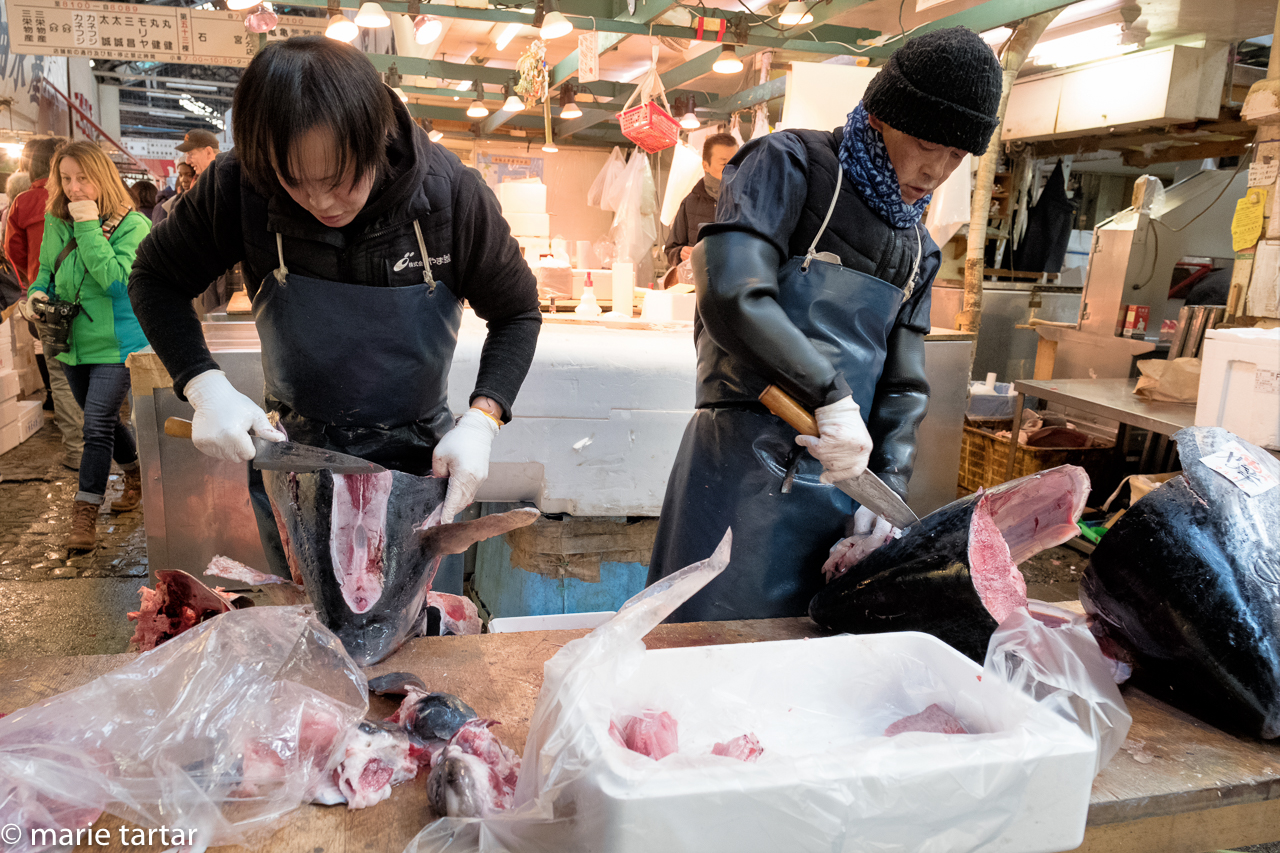
Karen from our group (green jacket, on left) keeps a respectful distance from the men wielding knives and wrestling large tuna heads at Tsukiji Fish Market, Tokyo.
This was the 3rd visit to Tsukiji for Steve and me. Each time, I am sure it will be the last, as Tsukiji has been slated for years to be moved from its historic home to the Toyosu waterfront. That was supposed to have happened back in 2016, then was postponed over environmental concerns at the new site. It has again been scheduled to relocate in October 2018. It is a mind-boggling institution, the nexus of the world’s craze for seafood and sushi. Every time I’ve been there, I’ve been amazed at the unfettered proximity allowed to the workers, wielding knives and hooks, wrestling large frozen blocks of fish and fish heads, as carts and turret trucks whiz by.
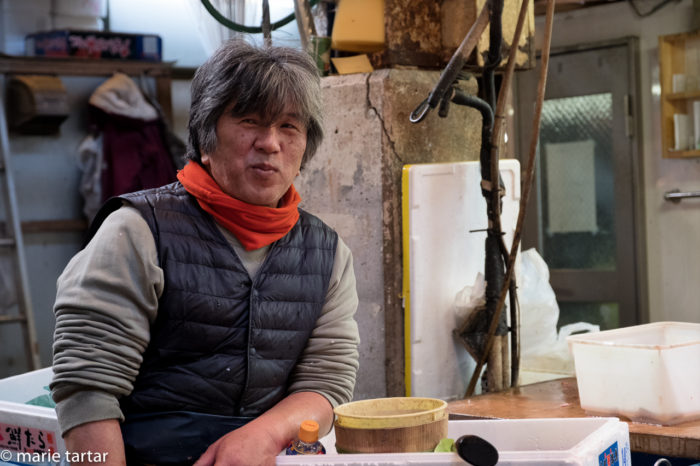
A brief pause in the action at Tsukiji; at 9 am, when visitors are allowed in, the day is nearing its end for these workers.
It was lightly raining when we made it back to the hotel, long enough to collect our bags, pack ourselves into taxis and cab it to Tokyo station, where we caught a shinkansen to Nagano. Our hotel for the next 2 nights was right across the street from the station, the Nagano Tokyu REI Hotel, a comfortable, Western-style hotel.
Steve, Greg and I walked through the downtown neighborhood of the hotel and found ourselves at Leffe craft beer with just enough time for a quick happy hour. Even non-beer drinker me enjoyed my Earl grey beer. Dinner was at a nearby izakaya (gyoza, cucumber salad). We were fortified for snow monkey country!
-Marie


